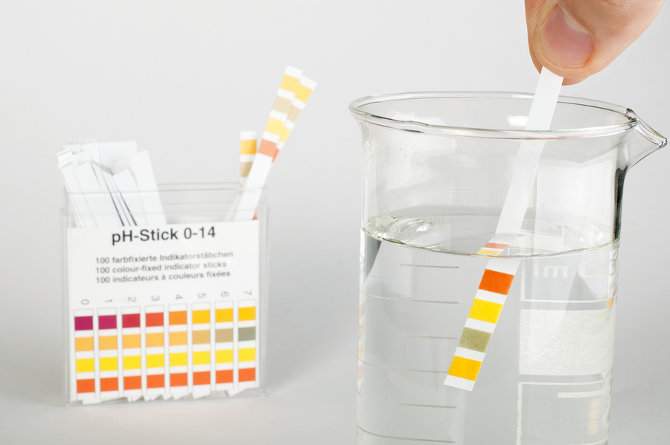Skin pH
Skin pH is one of the most important things you should understand about skin.
The skin is naturally acidic. Surprised? That doesn’t seem intuitive, does it? When we think of acidic, we probably think of lemons, grapefruit, and vinegar.
Skin exists at a pH of around 5.5 (which is slightly acidic). This is an average, but it can range from 4.5-6.5 depending on your skin chemistry and what products you have been using on your skin.
This acidity plays a key role in skin. Certain enzymes in the Stratum Corneum are activated at an acidic pH. Changes in pH affect enzyme activity and interfere with the skin’s normal shedding process (desquamation), which is why maintaining the correct pH of your skin is essential for healthy skin.
Additionally, an acidic pH inhibits the growth of certain harmful bacteria on skin.
What is pH?
pH of Common Items
The Acid Mantle Protects Skin
The Stratum Corneum (the outermost layer of the epidermis) is a protective barrier to the external environment.
The combination of sebum and sweat forms a film on top of the Stratum Corneum known as the acid mantle. It is both a physical and chemical barrier that provides a crucial form of protection, the skin’s first defense mechanism.
If it is disrupted or removed, skin becomes more permeable to microorganisms (such as bacteria), harsh chemicals, and pollutants. Water escapes from skin faster too.
The pH of Skin Care Products is Very Important
So, let’s return to why skin pH is so important. If our skin is naturally acidic, we should be applying skin care products that are consistent with our skin’s natural pH. Makes sense, right?
Changing the skin’s pH on a continual basis is harmful to skin because it disrupts the acid mantle, which serves an important protective function. The exception is when there is a specific treatment objective, such as exfoliating with an Alpha Hydroxy Acid, in which case an acidic pH is required for the treatment to work. In a facial, a skin professional giving a chemical peel (which is at a much lower pH than skin’s pH) will always neutralize the acidity and bring the skin’s pH back to normal after the treatment is completed.
Higher (alkaline) pH products dilate follicles (swelling them), which increases the permeability of skin. Skin that is more permeable is more vulnerable to microorganisms and irritants.
In summary, what you need to know about pH is:
- Extreme pH levels harm skin and cause inflammation, irritation, and dryness.
- Repeated use of products that are not pH-balanced can create chronic problems in your skin.
Unfortunately, some skin care products are pH-inappropriate. I won’t pick on any brands, but you might be surprised that this happens with some popular brands.
You Can pH Test Your Products At Home
You can test the pH of your skin care products by buying pH litmus strips at your drugstore or buying a pH meter tool. It can quickly tell you an approximate pH.
If the pH is less than 4 or more than 6, I would recommend you seriously consider stop using that product. In general, I don’t like to see things go to waste, but if you have problematic skin, such as acne or sensitivity, then it is especially important for you to maintain the integrity of your skin barrier.
Don’t forget to test your makeup too. Makeup should also be at a skin-friendly pH, since it is going on your skin after all.
A Difference of 1 pH is Huge
A difference of 1 pH may not seem like a lot. But, on the pH scale, a difference of 1 number is a power of 10. This means that a pH of 4 is 10 times more acidic than a pH of 5. A pH of 3 is 100 times more acidic than a pH of 5. A pH of 2 is 1,000 times more acidic than a pH of 5. (If this doesn’t sound logical, it’s because the pH scale is logarithmic, not linear.)
So, look for products that stay within 1 pH of skin’s pH — ideally in a pH range of 5.0-6.0.

